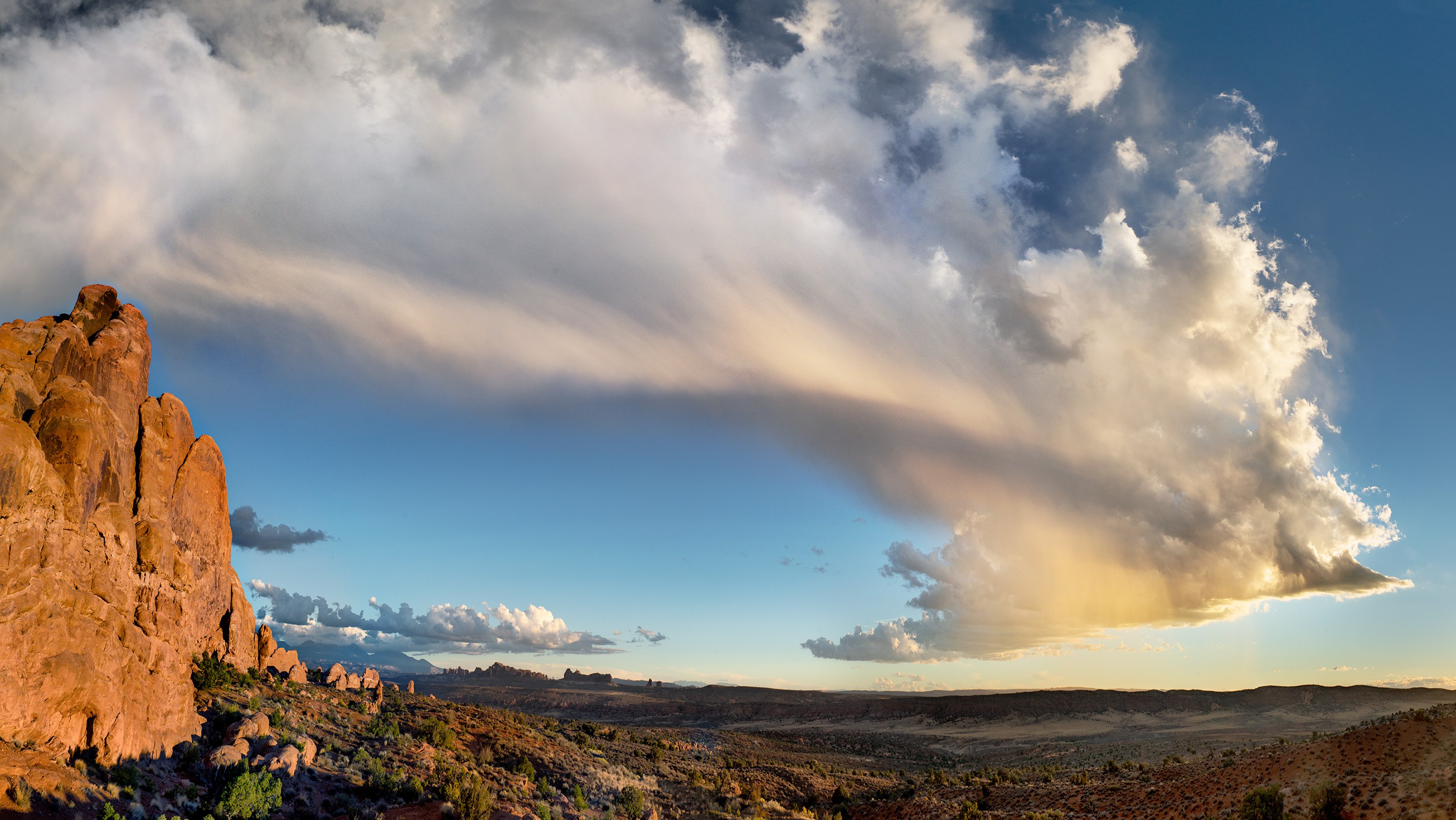The weather in the Utah Canyonlands undergoes a seasonal shift in early October. Monsoons have long since ended, and a northwesterly flow brings in fall’s first “blue norther.” Several years ago, during the October trip when I captured this image, a cold front came through eastern Utah’s Arches National Park, providing the first rain to dampen the dust and clear the air of wildfire smoke. That evening, the remnants of a towering cumulonimbus cloud dissolved as a brightly lit gush of virga rain evaporated in the desert air.
It is a dramatic time of year when the last days of a seemingly endless summer finally end. On this day, the sun cut through the extraordinarily clear evening air, lighting up the sandstone walls of Arches National Park with an intense red hue that complements the rust tones of the season’s changing colors beneath a brilliant cyan-blue sky.
On the right side of the photograph, the pinnacles of the “Fiery Furnace” – named for their iron-rich sandstone that glows radiantly at sunset – act like a pulled-back curtain, revealing glimpses of the La Sals Mountains, arches in the park’s Windows Section, the distant peaks of the Abajo Mountains, and the ridge of Elephant Butte above the Salt Valley Wash. Scattered Piñon and Juniper are surrounded by fields of cheatgrass, saltbush, and blackbrush. The sandy ground is coated with microbial colonies of cyanobacteria, algae, fungi, lichens, and moss that are vulnerable to the sometimes-errant footsteps of hikers seeking solitude as they strike out into this vast, open wilderness.
Location research and commentary by James Baker.

